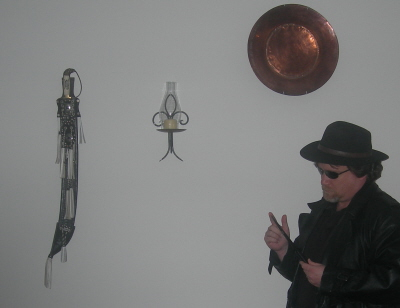Blog Calendar
| ◄ April ► |
| S | M | T | W | T | F | S | | | | 1 | 2 | 3 | 4 | 5 | 6 | 7 | 8 | 9 | 10 | 11 | 12 | 13 | 14 | 15 | 16 | 17 | 18 | 19 | 20 | 21 | 22 | 23 | 24 | 25 | 26 | 27 | 28 | 29 | 30 | | | |
| Archive | RSS |
About This Author
Come closer.
|
Complex Numbers #1083694 added February 11, 2025 at 9:05am
Restrictions: None
Leaning Tower of Pizzarotti
In recent decades, these slender "pencil towers" have been popping up all over NYC. As an engineer, I appreciate the science that goes into being able to build them. As a human with working eyes, I don't like them. And then this happens, as reported in The New Yorker:
Well, from what I've heard, no one actually lives in those things. The units are bought up by foreign investors and traded amongst billionaires like beanie babies or bitcoin. I could, however, be misinformed.
But that's really irrelevant. The important thing is that one of them is falling over, and it makes me laugh.
That is, after you wade through the first few paragraphs, which solidly adhere to The New Yorker School Of Not Getting To The Fucking Point.
“The slab edges on the north side of the building are misaligned by up to 8 inches,” the developer disclosed. 1 Seaport was six hundred and seventy feet tall, and leaning.
And I find that hilarious.
The article further meanders into other examples of leaning towers, accidental and deliberate.
An ideal site for a skyscraper is above strong, flat bedrock that is relatively close to the surface, about fifty feet underground. The bedrock below much of midtown is at that depth.
I like to think that you can look at the Manhattan skyline (from the west or east, anyway), and you can tell exactly what sections have solid bedrock.
161 Maiden Lane is not such a site. The Dutch, who laid out Maiden Lane in the seventeenth century, were the first to use “infill”—sand, stones, trash, whatever was handy—to expand the contours of Manhattan.
And the problem reveals itself. I think this is similar to the Millennium Tower in San Francisco, which, as I understand it, was not only built on loose rock, but exists in an earthquake zone.
Later, local officials sold “water lots,” or parcels of land submerged below the East River or the Hudson River, on which developers could dump infill themselves.
Ha ha ha oh boy.
First, twenty-four feet of Colonial-era infill, composed of gravel, silt, concrete, steel, bricks, and chunks of old shipwrecks and docks. Below that, pancaked former marshland. Below that, sandy deposits left by glaciers thousands of years ago, and a layer of decomposed rock.
And yet, they built.
The Fortis Property Group, for reasons that remain the subject of multiple overlapping and complex civil litigations, opted for a different kind of foundation, less often used in Manhattan high-rise construction, called “soil improvement,” which involves injecting concrete into the ground to firm it up. The process promised to save the company six million dollars, but it came with some risks. An engineering consultant named Robert Alperstein produced a nearly hundred-page report that warned Fortis that the method could lead to “differential settlements.” In other words, the structure might lean.
Aw, what does the licensed and experienced engineer know? We could SAVE MONEY if we do it this way.
To build 1 Seaport, Fortis hired Pizzarotti, a renowned Italian construction firm that was trying to break into the New York City high-rise market, as the construction manager. Pizzarotti in turn hired a local company called SSC High Rise to build the tower’s concrete superstructure. The job site was troubled from the start.
Hence this entry's title: a pun I couldn't refuse.
Rather than pausing to fix what had already been done, an attempt was made to straighten the thing out in midair. To compensate for the lean, higher floors were intentionally poured out of alignment, in the opposite direction.
Because that never leads to problems.
This compounded the problem. “What happened was, as the building went up, the parties tried to pull it back and it kind of counterweighted,” a lawyer representing Pizzarotti later explained to a judge. “Your Honor,” the lawyer said, “it’s shaped like a banana right now.”
Oh, wait, I meant to say that always leads to problems.
The tower has continued to sulk over the waterfront, more a ruin than a construction site, its grim façade visible from the Brooklyn Bridge, the Wall Street heliport, and even from the N.Y.P.D.’s headquarters, nearly a mile away.
I'm not sure why they put the NYPD in there, except maybe to lend a tone of "this was some illegal shit" to the article.
As usual, there's more at the link—quite a lot more, since this is TNY, and not all of it truly relevant—so it's there if you're interested. I know that this may be kind of a niche thing for me, as an engineer with an architect cousin who works in NYC, which I visit almost every year. But while not nearly as good as The Guardian's superb takedown of the architectural monstrosity on the other side of Manhattan, I found this highly entertaining. Well, except for the one guy's death. That wasn't funny. Everything else, though... |
© Copyright 2025 Robert Waltz (UN: cathartes02 at Writing.Com). All rights reserved.
Robert Waltz has granted InkSpot.Com, its affiliates and its syndicates non-exclusive rights to display this work. |

